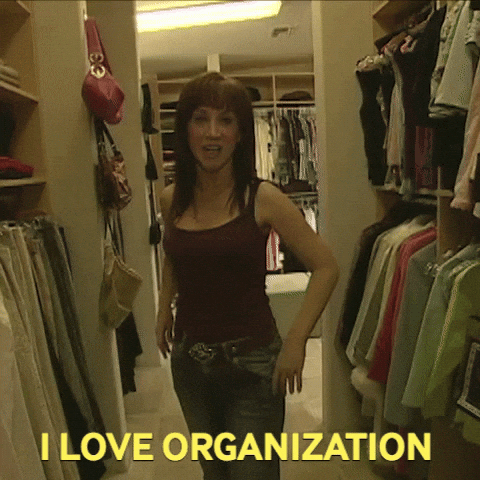Listen, if your Support tagging strategy is like that of most SaaS companies, it’s almost like having a digital junk drawer. It’s a little bit of everything, labeled by everyone, and understood by no-one. A graveyard of guesses and gut feelings, if you will.
Let me see if I can describe what’s currently happening in your Support team:
- Your inbox is made of chaos
- Nobody really knows what the team priorities are
- Agents are wasting a lot of time on redundant, repetitive tasks (and likely crying in a quiet corner of your Slack channel)
- You may have access to some reporting, but it doesn’t tell a story
- Support can’t get (budget) buy-in for necessary tools or resources
Go ahead and leave a comment with how accurate that was. I’ll wait.
Seeing as you’re here and reading this, I’m going to take a wild guess and say you’re ready to stop making decisions based on ✨vibes✨. When tagging is done right, they provide power and clarity. They’re the difference between:
- “We think people are struggling with onboarding”, and
- “25% of tickets this month flagged ‘onboarding confusion’ as the root cause, and 10% of those customers recently mentioned a churn risk”
I know you see the difference. Let’s talk about exactly why, what, and how to make this happen for your team.
What Tagging Should Do
If your tags don’t make it easier to answer questions like:
“What’s driving most of our Support volume?”
“Where are users getting stuck?”
“Which issues correlate with churn or upgrades?”
…then congratulations, you’ve got a sticker collection, not a system. Tags aren’t decoration, they’re metadata that serve a very specific purpose.
They’re the foundation to structuring your workflows. Tags allow you to automate your triage process, set up intelligent routing, and trigger escalations. Less manual work for you and your team need to do to handle tickets efficiently means more ROI, happier customers, and happier agents.
Tags feed your Ops engine. They provide insights into foundational datapoints such as volume by issue, cost per type, and first-response effectiveness. This allows you to make data-driven decisions that make a very real difference in how your customers experience your brand.
Tags inform your strategy. Your Support team isn’t “just answering emails”, they’re the ones to signal clear trends for Product, Marketing, and Leadership. Heck, they can even provide your Engineering team with extremely valuable insights in cases of critical incidents.
To make it more concise: tagging conversations is the starting point of every strategic decision you make for your SaaS company. It’s what will allow you to answer every “why should we do that?” with specific evidence and with this attitude:

Why Most Tag Systems Suck
Ohhhh man, let me count the sins:
- Over-tagging. Every ticket gets six tags because agents are guessing, not choosing.
- Vague naming practise. What does
issue-othereven mean?! You don’t know, and neither does the agent whose job it is to assign the tag. - Legacy bloat. This one’s a kicker, and the little brother to tech debt. Keeping tags that made sense two PMs ago just because someone might still be using them (they’re not) is like that box full of cables taking up space in your garage. You and I both know it’s better off at landfill.
- No hierarchy. Mixing cause, effect, and vibes in one nifty list is… not great.
The result: dirty data. Misleading reports. A team that’s either too afraid to tag conversations, or agents end up adding junk in order to be able to close the ticket.
None of that is helping your team progress. Quite the opposite, even: contaminated data will end up costing your business money.
A Tagging Framework That Actually Works
Okay, now that I’ve thoroughly dragged your tagging process: here’s a framework that doesn’t suck.
🧠 The Rule: Tags = Signal, Not Noise
You do not need 50 tags. You really, really don’t. You need 5-10 good ones in each of a few categories. This study on social media tagging shows how limiting the number of tags that are used actually fosters efficiency. And yes, I know that Social Media and Customer Support are not the same thing, but both utilise tags in to quantify and flag important data.
Here’s a structure I recommend:
1. Issue Type
What is the ticket about? This should be a high level category:
- Login Problem
- Bug Report
- Payment/Invoice
- ‘How To’ Question
- Feature Request
2. Root Cause
What caused the issue to occur?
- Backend Failure
- UX Mismatch
- Customer Misunderstanding
- Internal Policy Gap
3. Impact Level
How bad is this for your customer?
- FYI
- Annoyance
- Blocker
4. Product Area
Optional, but gives your Engineering/Product team something to sink their teeth in.
- Onboarding Flow
- User Management
- Billing UI
Layer in things like Churn Risk, Sentiment, or Escalation Needed only if your team knows how to use them consistently. Otherwise, start simple. Calibrate later.
Making Tags Worth The Trouble
Let’s be real: tagging can feel like it’s busywork assigned by someone who’s never had to triage 47 tickets before lunch. So if you’re going to force your team (or yourself) to manually classify chaos, those tags better do something.
Here’s what “worth it” looks like:
🎯 Tags should be working harder than your coffee machine
- Build dashboards that actually mean something.
→ Not vibes. Not gut feelings. Data. “30% of tickets in Q2 were tied to UX friction in the new dashboard” is a conversation starter with Product, not just a sad graph in Looker. - Make roadmap arguments without begging.
→ “This one issue caused 80 tickets last month and 5 of those customers explicitly mentioned canceling.” Now you’re not just asking for a fix—you’re holding up the receipts. - Protect your team from silent burnout.
→ “We flagged 20 ‘Blocker’-level tickets last week, and half were routed to the same agent.” That’s not just a support problem. That’s an Ops red flag and a hiring case.
But here’s the kicker: tags decay.
They rot in silence. They duplicate themselves like Gremlins. And if you don’t actively tend to them, you end up with a reporting garden full of weeds. So do this.
🧼 Once a month. 30 minutes:
- Export your top 20 tags by volume.
- Merge duplicates.
- Delete the ones that mean nothing.
- Ask your team what’s missing.
- Clean house like your QBR depends on it (because it does).
Tags are there to enable you to tell the truth faster, clearer, and with less apologies. If they’re not doing that, they’re just digital lint.
Need Help Cleaning House?
Clean tags = clean Ops. And clean Ops is how Support earns a seat at the grown-up Strategy table.
You don’t need a PhD in Customer Support Ops to get your tagging system in shape. You just need a framework, a team that knows why it matters, and sometimes a spot of help by someone who’s done this before.
Need a hand polishing your current tagging setup? Let’s talk.


Leave a Reply